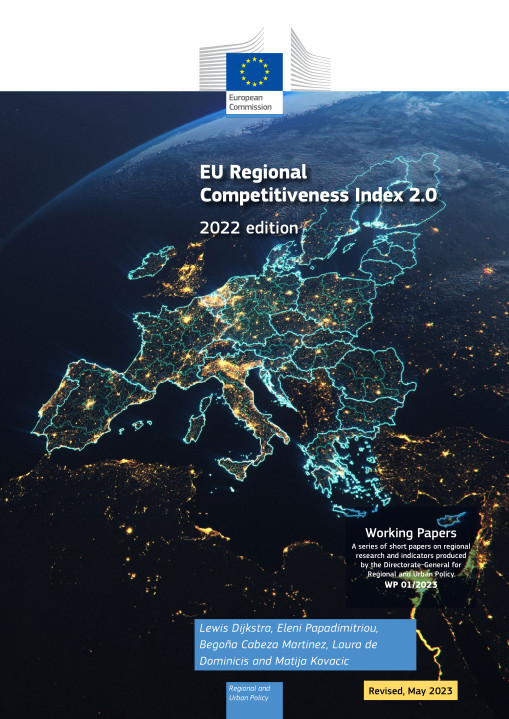EU Regional Competitiveness Index 2.0 - 2022 edition

Working Papers
Date: 27 mar 2023
Theme: Research and innnovation, Business support, Education and training, Employment and social inclusion
Languages: en
Revised, May 2023
This paper presents the fifth edition of the European Regional Competitiveness Index (RCI). Since its first edition, RCI 2010 (Dijkstra et al., 2011), the RCI has grown into a much-cited and widely used index. The focus of the first few editions was on capturing the differences in competitiveness between regions at one point in time. As more editions were published, however, the focus expanded to capturing changes over time in a robust manner. This presented several challenges: the list of indicators has changed over time; some indicators are no longer collected or are no longer relevant; and new indicators have been added to capture new issues. In addition, the changes in the Nomenclature of Territorial Units for Statistics (NUTS) 2 regions of Croatia, Ireland, Lithuania and Poland have created breaks in the time series.
The countries included in the RCI have also changed. Croatia was added in the 2013 edition, and this fifth edition is the first one that doesn’t include the United Kingdom. The changing composition of the EU means that previous editions cannot be used for a time comparison. This break in the series was used as an opportunity to re-evaluate the underlying methodology and recalculate the previous two editions using the updated methodology. To highlight these changes, this new version has been called ‘RCI 2.0’.
According to the World Economic Forum (WEF), competitiveness at the national level is the ‘set of institutions, policies and factors that determine the level of productivity of a country, (Schwab, 2012; Schwab and Porter, 2007). Our definition of regional competitiveness is slightly different, as it integrates the perspective of both businesses and residents (Dijkstra et al., 2011).
Regional competitiveness is the ability of a region to offer an attractive and sustainable environment for firms and residents to live and work.
This definition balances the goals of business success with those of societal well-being and responds, at least partially, to the ‘beyond GDP’ discussion. In our definition, the concept of sustainability relates to the region’s capacity to provide an attractive environment in both the short term and the long term. For example, by including numerous indicators on human capital and the quality of institutions, the RCI is meant to measure the long-term potential of a region.
Starting from the framework developed by the WEF for their Global Competitiveness Index (GCI) (1), the RCI adapts this framework and extends it to the regional context in the EU, with the aim of capturing the underlying factors that support a region’s long-term economic development. It does not aim to capture the impact of short-term shocks, such as the COVID-19 pandemic or the invasion of Ukraine. To avoid the pandemic biasing the underlying factors of competitiveness, we used data from 2019 for certain indicators instead of that from 2020 or 2021. For example, the number of flights was much lower in 2020 than in 2019, so the 2019 data was used. The impact of the invasion of Ukraine is not yet reflected in this edition as the data used predates the invasion.
Given the high interest in the index and its changes over time, we developed new interactive tools. These tools facilitate the comparison of the RCI, its sub-indices and the pillars between EU regions. These include scores for the 2022 index for comparison with scores of 2016 and 2019, calculated using the new methodology. Interactive scorecards provide a quick overview of how a region performs and compares to its peer regions. All the scores and their underlying data can be downloaded.
Annexes
- Corrigendum to the March version en
- Presentation RCI 2.0 - 2022 edition, revised en
- RCI 2.0 – Maps, revised en
- RCI 2.0 - scores 2022 edition and back-calculations for 2019 and 2016 editions, revised en
- RCI 2.0 - Indicators' descriptions 2022 en
- RCI 2.0 - Indicators' descriptions 2019 en
- RCI 2.0 - Indicators' descriptions 2016 en
- RCI 2.0 - Raw data 2022, revised en
- RCI 2.0 - Raw data 2019 en
- RCI 2.0 - Raw data 2016 en
